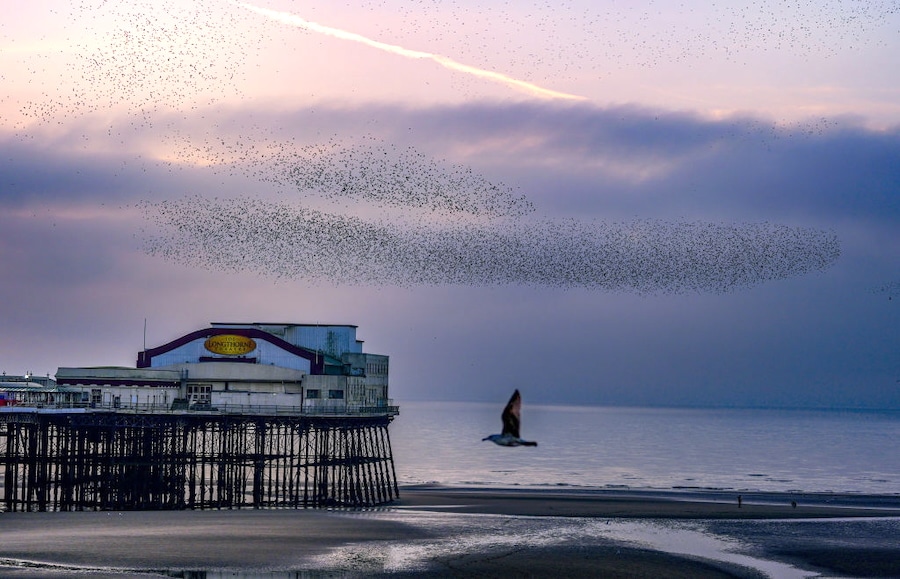This post was originally published on Eco Watch
During the last weekend of January, participants in Britain’s Big Garden Birdwatch are asked to keep track of the number of each avian species they see at their location over a one-hour period. The counting and recording is usually done in gardens, but parks and other green spaces work too.
Participants in this year’s Birdwatch by the Royal Society for the Protection of Birds (RSPB) recorded fewer sightings of starlings than ever before, raising fears about their decline.
“Starlings are one of our most charismatic garden birds, but this year’s Big Garden Birdwatch results are a reason for concern. With one in six species at risk of extinction [in] Great Britain, we’ve done more damage to our natural world than we realise. However, we can all do our bit to support these threatened birds by taking small actions that can not only benefit starlings, but a wealth of other garden wildlife,” said Beccy Speight, RSPB’s chief executive, as The Guardian reported.
The bird conservation charity urged gardeners to avoid pesticides, which reduce insect numbers and can poison birds, in addition to keeping lawn habitats wild by not mowing too often.
The house sparrow topped the list of most seen birds in the UK, with 600,000 people who participated in the annual survey having spotted them. For the first time since Birdwatch began in 1979, the starling came in fourth place, with the blue tit and wood pigeon taking second and third, respectively.
“House Sparrows are one of the UK’s most widespread birds. While they are often the most commonly spotted garden birds in Big Garden Birdwatch, unfortunately their breeding numbers have drastically declined since records began over the last 50 years,” a press release from RSPB said.
House sparrows were listed on the UK’s Red List of birds of high conservation concern in 2002, where they remain.
Bird numbers were down across the board in the UK. On average, 3.5 sparrows were spotted in gardens during this year’s survey, down from four in 2024. Blue tit numbers fell from 3.04 to 2.77, while starlings decreased from 2.44 to 2.3.
Since the survey began, sparrow numbers have decreased by 54 percent, while starlings have plummeted 84 percent and greenfinches nearly 68 percent.
According to government statistics, wild bird populations in the UK have been declining due to habitat loss, climate change, pesticide use and bird flu, reported The Guardian. From 2018 to 2023, populations dropped by seven percent in England and two percent across the UK.
To help diminishing bird numbers, RSPB recommended installing garden nesting boxes with a 1.7-inch entrance hole. They also suggested keeping lawns natural with clover, dandelion and other wildflowers that attract pollinators and encourage birds to forage for invertebrates.
“One way to help garden birds is by encouraging insects. Why not let a patch of your garden grow wild this spring and summer? You’ll get a rest, and you’ll reap the rewards come Big Garden Birdwatch 2026,” RSPB said in the press release. “The problems faced by birds are many and varied, which means we need to take action in all sorts of areas. From gardening for wildlife to the way we farm and manage our rivers, it all impacts on nature. That’s why we work tirelessly to save, protect and fight for nature. And when we come together for nature, it works.”
The post As British Bird Count Records Low Numbers, Conservationists Urge Gardeners to Ditch Pesticides, Let Lawns Grow appeared first on EcoWatch.





0 Comments